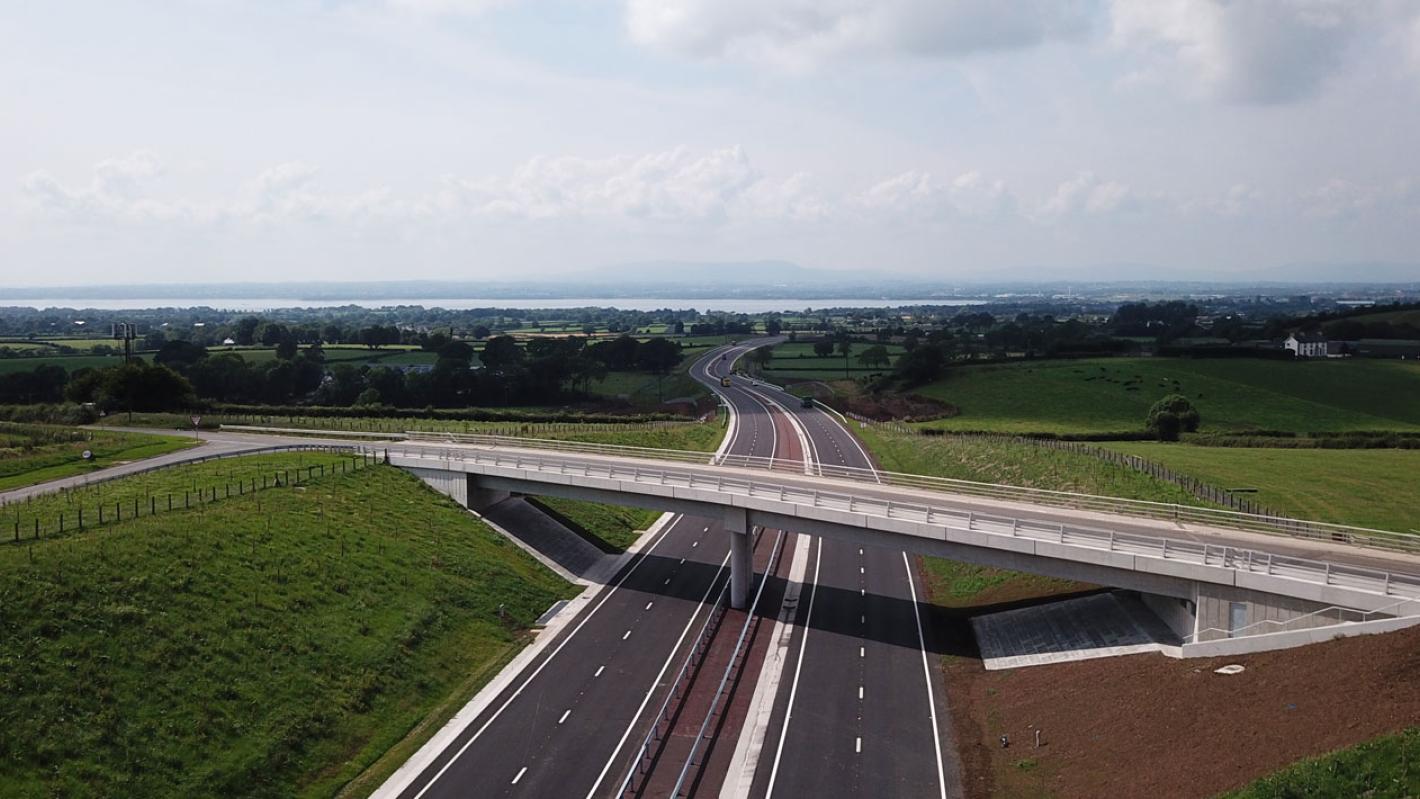
Structure S24 Ballnafey Road Overbridge on the A6 Randalstown to Castledawson ECI scheme, with Lough Neagh in the distance.
A dualling scheme designed to enhance the strategically important A6 North Western Transport Corridor

Roughan & O’Donovan (ROD), in 50:50 design joint venture with ARUP, delivered the detailed design for this £189m dual carriageway scheme between Castledawson and Randalstown on the A6 in Northern Ireland. We also had a full-time designers site team working closely with the design offices and a contracting team monitoring construction of the works.
The scheme comprised 14.7km of high-quality dual carriageway, with a 7.4km section between Toome and Castleldawson and a 7.3km section between Randalstown and Toome, each connected by the Toome Bypass.
It included:
This flagship project was opened fully to traffic on 29 May 2021.
2022
CEEQUAL Excellent Sustainability Whole Team Award
2020
Winner of the Infrastructure Project of the Year award at the UK National Government Opportunities (GO) Excellence in Public Procurement Awards 2020.
2019
Winner of the Social and Community Benefit award at the UK National Government Opportunities (GO) Excellence in Public Procurement Awards in 2019.
ROD's Dublin office and ARUP's Dublin, Belfast and Cardiff offices delivered the scheme design in two phases:
Phase 1
Phase 1 involved working closely with DfI and their Project Manager, AECOM, over a 12-month period to complete a detailed review, rationalisation, and buildability assessment. By driving value through all disciplines, we developed the scheme layout design to a robust, durable and cost-effective agreed target design.
Phase 2
Phase 2 involved developing the target design into a fully detailed design provided in accordance with the DMRB, MCDHW and Eurocodes as implemented by the UK National Annexes. It also included construction and handover of the scheme. ROD and ARUP provided an integrated cross-company full-time designers site team, co-located with the CJV construction team, to monitor and supervise construction of the works.
Cross discipline risk/value workshops were convened on a regular basis to ensure a holistic and efficient design delivery.
During Phase 1, our design team leaders and programmer worked with the CJV programmers to develop a detailed integrated design and construction programme which was delivered on during Phase 2.
Our project director convened and chaired fortnightly design development meetings across all design phases. The meetings were attended by the design management team, design team leaders, CJV design managers and construction managers. This process ensured a collaborative approach to design delivery and addressed the buildability requirements of the CJV, thus preventing abortive work and ensuring adherence to the programme.
As in any project of this scale, the team faced a multitude of risks, opportunities and challenges. These ranged from agreeing activity allocation, managing a multidisciplinary team across multiple offices, meaningful data gathering to drive value, developing and adhering to the agreed integrated design/construction programme through to progressing design and construction during a period of COVID restrictions. Our collective aim was to mitigate risk, maximise opportunities and to deliver a durable scheme that delivered value for money for DfI.
A particular challenge was presented in the vicinity of the Creagh Junction at Lough Beg, one of the most important sites for wintering birds in Ireland. With the annual arrival of Whooper Swans from Iceland, no construction activity was permitted in the area from October to March. The location also provided the most complex ground condition on the scheme, with 20+m of loose sands and gravels over soft clays to bedrock at a location requiring a grade separated junction and overbridge.
This strategically important road scheme has delivered a much-needed section of the North-West Transport Corridor, reducing journey times from Castledawson to Belfast, enhancing connectivity, improving road safety and enabling faster emergency response times. It has also improved accessibility to the region and will contribute to regional balance, economic development and prosperity.
